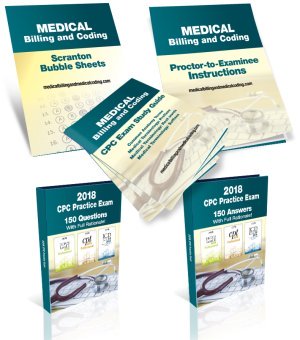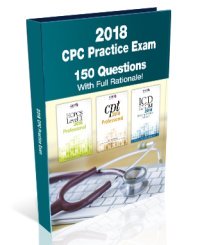PROCEDURE PERFORMED:
1. Re-exploration of lumbar wound.
2. Utilization of intraoperative fluoroscopic imaging.
3. Removal of L4-5 transforaminal lumbar interbody fusion spacer.
4. L4-S1 posterolateral autologous lumbar fusion with autologous bone marrow aspirate and allograft bone graft.
INDICATION: The patient is a 37-year-old male who had undergone a prior right L4 through S1 laminectomy with transforaminal lumbar interbody fusion approximately 2 months prior to this admission. He had done reasonably well with expected postoperative discomfort. He had began postoperative physical therapy. During this time he had a ground level fall causing significant low back pain. He had progressively worsening left lower extremity pain in L5 left radicular distribution. He was treated with oral steroids and imaging studies including a CT scan of the lumbar spine were obtained revealing extrusion of the L4-5 interbody spacer into the left neural foramen producing nerve root compromise. He was ultimately recommended for reexploration of wound and removal of the extruded TLIF spacer which had occurred from his fall. He was also recommended to supplement this with additional autologous and allograft bone graft
fusion at the time of surgery. This procedure as well as risks, alternatives, benefits, possible complications, were discussed with he and his wife and all their questions answered. He expressed he understood and wished to proceed. Consent was obtained.
PROCEDURE: The patient was taken the operating room where general endotracheal anesthesia was initiated without difficulty. He was given IV antibiotics and steroids, placed prone on the operative table, and all pressure points were padded. Somatosensory evoked potentials were connected to the patient and monitored throughout the case and appropriate adjustments made throughout the surgery. A time-out was taken and all personnel in the operating room were in agreement. Again, his lumbosacral area was shaved, prepped, and draped in usual sterile fashion. His old incision was marked and infiltrated locally with 0.5% lidocaine with epinephrine in a 1:200,000 concentration. An incision was made with a #10 blade scalp and carried down to the subcutaneum. Hemostasis was obtained using Bovie electrocautery. Self-retaining retractors were then placed. There was noted to be postoperative adhesive fibrous tissue and this was carefully dissected sharply with a #15 blade scalpel, Metzenbaum scissors and blunt dissection with curettes and periosteal elevators. This brought us to the lumbodorsal fascia. The lumbodorsal fascia was incised with Bovie electrocautery and the old suturing material was cut with Metzenbaum scissors and removed with hemostatic forceps. At this point, subperiosteal dissection was carried out along the spinous process lateral facet joints bilaterally using periosteal elevators and Bovie electrocautery. Again, there was noted to be fibrous adhesive postoperative tissue which was carefully sharply and bluntly dissected using Bovie electrocautery, periosteal elevators and Metzenbaum scissors. The pedicle screw instrumentation was easily visualized and deeper retractors were put into place. Our location was confirmed with intraoperative AP and lateral fluoroscopic imaging as well. At this point, using continuous AP and lateral fluoroscopic imaging, the L4-5 level was easily confirmed. Careful sharp and blunt dissection using Penfield micro dissectors and straight and angled curettes, the extruded TLIF spacer was easily visualized extending up from the L4-5 disc space eccentric to the left into the left neural foramen with dorsal distortion of the left L5 nerve root. With gentle nerve root retraction with a Penfield #4, the TLIF spacer was obviously loose and half way extruded from the L4-5 disc space, and this was carefully removed loosening with straight and angled curettes and further removed using a straight pituitary rongeur. The operative site was copiously irrigated with bacitracin irrigation. Hemostasis obtained using bipolar cautery and thrombin-soaked Gelfoam. The operative site was carefully inspected visually and with a Woodson dental instrument and the nerve root was found to be generously decompressed. The disc space was palpated and no further free disc material was noted. The pituitary rongeurs, both straight and up-biting, were utilized to remove any further remaining disc material encountered. This was done under continuous nerve root monitoring and continuous AP and lateral fluoroscopic imaging. At this point, approximately 30 cc of autologous bone marrow was harvested from the patient’s right iliac crest using a Jamshidi needle. This was mixed with allograft morselized bone graft and demineralized bone matrix putty and this allograft fusion material was placed posterior laterally along the lateral facet joints and transverse processes bilaterally around the pedicle screws and laterally. The operative site
was copiously irrigated with bacitracin irrigation, hemostasis obtained using Bovie electrocautery. The instrumentation was found to be solidly in place in good alignment. This was confirmed with final AP and lateral fluoroscopic imaging. Again. Nerve root monitoring was monitored throughout the case. Appropriate adjustments made as indicated. The retractors were removed. Wound closure was begun. The paraspinous musculature, lumbodorsal fascia and subcu were reapproximated using #1 Vicryl in an inverted interrupted fashion. Skin was closed using staples. A sterile dressing was put in place. All sponge, needle, and instrument counts were correct at the end of the case. The patient was turned supine onto the hospital cart, awakened from anesthesia, extubated, and transferred to the recovery room in stable condition.





